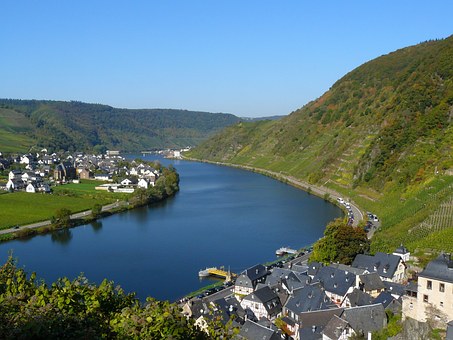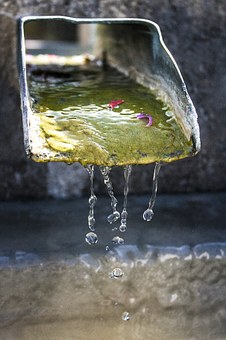Climate Change Factoid - The Carbon Cycle (#11 of a series)

Author: Rich Albertson
Author: Rich AlbertsonThe Carbon Cycle is the name given by modern science to Nature's system for controlling the internal operations of its four major subdivisions (called compartments) and also how the compartments operate as a group. These compartments are named: Hydrosphere The oceans and everything in them Geosphere The earth's crust to about a foot in depth (extent of atmosphere's penetration) Biosphere All the living things on the surface. You and me, trees and all plant life, all the other critters, microorganisms, etc Atmosphere As layer as thin as a light coat of spray lacquer on a billiard ball. All of the carbon on earth is included in these four compartments. That total amount of carbon is exactly the same amount of carbon that existed on the day earth was created. Nothing has been lost or added, ever. The amount of carbon within a given compartment affects the level at which it performs its function. Nature moves very tiny amounts of carbon from one compartment to another, adding or subtracting, in order to adjust how each compartment performs and also how they will perform as a group. Example: Add or subtract carbon to/from the atmosphere (such as CO2) and the temperature increases or decreases, respectively. Another example: Add or subtract carbon (such as CO2) to/from the ocean and the seawater gets more or less acidic, also respectively.
The CO2 added to the atmosphere by modern humans (an increase of 36% over the amount historically found in the atmospheric compartment), did not come from any of the four compartments. It came from way underground where it had been sequestered away from the carbon cycle for millions of years. We sucked it to the surface through pipes, burned it and the CO2 produced (now a gas) became a structural part of the atmosphere. This is extra carbon, at least as far as the carbon cycle is concerned.

Carbon doesn't just fall out of the atmosphere after awhile. It is not IN the atmosphere, it is a gas, so it is PART of the atmosphere. Since the carbon cycle has never seen this extra carbon before it has no previously designated place to put it. As such, it will have to be managed into the other compartments by the carbon cycle at its geologically timed pace. From past experience (good research on this point), this amount of carbon should take somewhere in the vicinity of 100,000 years to be absorbed at that geological pace. In short, it's going to be up there for a long, long time.
It's true that CO2, the greenhouse gas in question, makes plants grow so we should expect the Biosphere to become larger. That can only deal with a small part of the problem because that plant growth will be limited by the quantity of nutrient available, the reduction of rainfall over large land masses and the growth of wildfires resulting from drying caused by rising heat. It can help but its only a drop in the bucket of what would be needed given the size of the problem. The ocean is a sink for CO2 but it has become so acidic from the extra CO2 it has already absorbed, degrading the operation of the ocean to such an extent that it seems unreasonable to expect it can continue as a sink for much longer. In recent years the rate of absorption has already begun to slow.

Since all of this extra carbon will remain aloft for a long time that means that all efforts to reduce our future carbon footprint will have no effect on slowing, much less stopping, climate change. (Peer reviewed research, supporting the claims made in this factoid, can be found at the website) About the Author:
Rich Albertson is a retired lawyer, author, builder, building designer, carpenter and long time amateur naturalist. He lives in Portland, Oregon.
Albertson's most recent book (2009), The Sky is the Limit A Brief and Easy Explanation of Climate Change for Present and Future Voters (134pp), is an explanation of the science, economics, politics and a discussion of the future of climate change written for people of average experience. Climate Change Factoids are drawn from the book. His first book (1978), The Bio-Conversion of Waste to Resource (4 Vols, 2624pp), was a treatise on methods for the sustainable management of solid and liquid waste in urban society. More about the Sky is the Limit book can be found at http://www.thecircleworks.org
As a Naturalist, Albertson's primary interest is to understand and then explain the conflicts that result from modern human practices that interfere with the operation of the natural world on a planetary scale. Hot christmas toys Climate Change Factoid - How Do We Fix It – Part One? (# 10 of a series) Climate Change Factoid - Why Did It Happen? (# 9 of a series) Climate Change Factoid - Feedback Loops (# 8 of a series) Climate Change Factoid - Patterns of Growth – When Will it Happen? (# 7 of a series) Simple Carport Plans For Country Living Manali - Blessed With Snowy Mountains Patong Hotels And Resorts Tourist Guide Planning For Phuket Vacation Packages Manali Travel Tips Looking For Best Comfort In Phuket Hotels? Manali Shift - Enchant The Pristine Mount Beauty! How To Prepare Yourself For Honeymoon